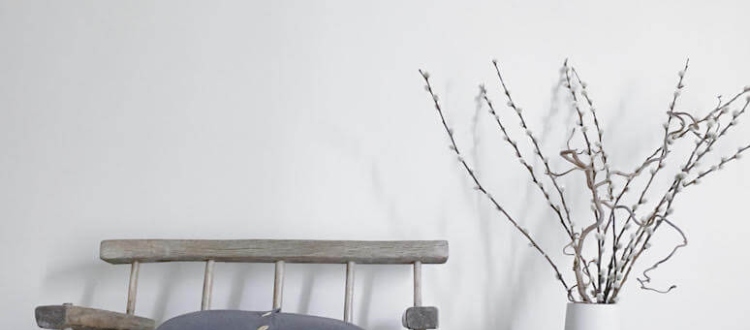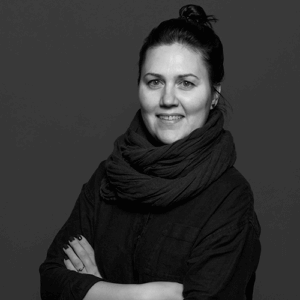
How to Renovate a Property and Change Your Life
Have you ever dreamed of chucking in the day job and heading for the hills? Of finding a way to make a living doing something you love, that provides a service to others and doesn't burn you out in the process? Our guest this week has done just that.
We are so delighted to feature a special in-depth interview with Dorian Bowen of The Welsh House. You may know Dorian from his gorgeous Instagram images of pared-back, rustic interiors. But you may not know how he ditched the rat race and changed his life by renovating an old cottage in Wales.

Can you tell us how you came to buy and renovate the cottages?
Having grown up in rural Carmarthenshire and after living in London for over 25 years I was longing for a rural retreat. Back in 2004 I found my first cottage, landlocked and abandoned but with one of the best preserved Welsh interiors. Whilst not for the faint hearted it was a challenge to preserve as much of the original interior as possible. In 2007 I stumbled across another cottage but this time wasn't so precious about the interior. I decided to modernise it by adding a contemporary concrete extension, in a bold attempt to illustrate how a traditional Welsh cottage can be transformed to meet modern day living needs.
My latest project, Ty Unnos, has been designed as a place for calm and reflection - a timeless example of architectural simplicity and beauty based on the concept of a traditional Welsh crogloft. This is a room overhung by a sleeping platform where serenity, contemplation and restoration are foremost. A place that reflects the way we live now, from growing appetites for sustainability and mindfulness to a return to simplicity, craftsmanship and heritage.
What have you learned along the way?
Never underestimate the complexity of a building project. Do your homework, as any delays in your decision-making will have financial implications. Renovating a cottage can be very rewarding as even un-skilled hands can do much of the work, but don’t rush into major works. Live with the house and the space before making big decisions. You will be amazed how many times you change your mind as you learn to live with the house during different seasons.
It's best not to tackle the whole house at once, instead renovating one small area at a time makes the whole project more manageable. So don’t feel that you have to strip every room back to expose original details. An honest and visible repair is better than a fake reproduction. Avoid the use of modern building and decorating techniques that will trap moisture in the walls as few, if any, cottages were built with damp proof courses walls and floors all need to breathe. Use lime instead of cement, distemper instead of plastic-based paints etc. Approach the house as if you are its guardian - in the history of an old cottage your residency is but a short event, so if a few things about the house don't suit your requirements, be prepared to put up with them.
Research the vernacular traditions of your area and find out as much as you can about local building materials, styles, and building types. If you see a well restored example then pluck up the courage to congratulate the owners. Be prepared to compromise - old buildings weren't designed for modern living. Space and light are wonderful things, but you may have to compromise on them if you want to enjoy the benefits of a traditional cottage. Remember your legal obligations if your cottage is listed or in a Conservation area. Find out exactly what you can and can't do, and don't forget that all the buildings within your curtilage are usually listed. That may include the garden walls, railings, sheds, garages etc. Enjoy your home and tell others about your work, and encourage them to learn more about their own homes. Evangelism is what we need!
What lessons are there for people who may want to change their lives but don't necessarily have the means at this point in time?

1: Understanding that not everything that happens to you is about you.
2: Focusing on other people without dwelling on how they view you.
3: Realising that you don't have to act the way you feel.
4: Being able to manage disappointment and adversity.
5: Knowing how to solicit honest feedback.
6: Staying true to your own values despite what others expect of you.
7: Being open to new information or revised thinking.
8: Mastering a fail-safe way to motivate yourself, one that works when interest flags.
10: Tolerating ambiguity.
What inspired/ influenced you in the styling and decoration of the cottages?
I believed that good interior design is as much about wellbeing as aesthetics, because how our space makes us feel is just as important as the way it looks. Few places demonstrate this more than the beautiful home of Louisa Grey, founder of interiors studio House of Grey. For me her renovated townhouse is everything a home should be: a sense of simplicity that embodies a sense of warmth. Her use of light and texture ensures a sensory connection, which is something I can relate to.
We live in a world of constant overstimulation, with pressure from social media, the demands of consumerism and a restricted work-life balance all contributing to less downtime for everyone. To help rectify this I love revisiting the concept of home and wellness to create spaces that are dedicated to replenishing your energy levels by engaging with your senses. This means a home, while still an active, functional space, is also a restorative haven.
I love the idea of providing a relaxing environment where visitors can escape the frantic pace of modern day living. That’s why I make no apologies that there’s no wifi at the cottages. It's a place to disconnect digitally and reconnect socially. Devoid of extraneous details and visual clutter, with focus on nature, guests find a habitat that is an ode to pared-back simplicity, with white lime-washed walls, slate floors and a devotion to a modern minimalism.
Collaborating with local artisans and makers avoids long-haul logistics and reduces our carbon footprint. Using lime-based paints, recycled materials and biodegradable products are all key to my approach. Embracing imperfection, there is something inherently satisfying about things that are a handmade. With this in mind I tend to fuse simplicity with the natural imperfections you get with materials and objects that have weathered in time.
Who has been your most interesting guest/guests?

When Alain de Botton visited during the filming of the Channel 4 series, The Perfect Home he describe Bryn Eglur as 'a meticulous recreation of an ancient farmhouse cottage, and ideal for anyone who wants to return to a vision of rural simplicity and rustic charm'.
Instagram gurus like Sara Tasker, Dominique Davis, Philippa Stanton, Julia Smith, Laura Pashby and Melanie Barnes have all experienced my digital detox retreats. I’ve also worked with some amazing bookazines like Modern Rustic, Cereal, Creative Countryside and In Clover.
But the guests who have touched me the most are those that keep coming back every year to replenish and to focus on mind, body and spirit to treasure the power of now.
Do you have any advice on getting a better work/life balance?
Changes in technology have driven much of our work/life balance but as we look to the future we discover new ways in which technology may go on to further transform our leisure time. But in the end, it's time spent together as a family that is the most important. No matter what incredible technological innovations await us, it's free time enjoyed together that we'll always treasure.
Here are some tips for achieving and maintaining a healthy work/life balance.
1 Play to your strengths.
2 Prioritise your time and save some personal time.
3 Know your peaks and troughs.
4 Have set work hours – and stick to them.
5 Find time for your finances.
6 Manage your time, long term.
7 Make your workspace work for you.
It is important to be able to find stillness in a space so you can make a proper connection with it. Also, take an interest in activities and subjects that have never previously absorbed you, and do them with intention. This could be things like: writing letters, baking bread, gardening, walking in nature. Making links with generations long-gone makes you feel part of a continuation rather than the end of it. It’s also no accident that there's an even greater need for the ‘slow’ movement in this relatively new millennium, where people are finding less and less satisfaction in their precarious employment and have firsthand experience of burnout from fast living without any real benefits.
The 'slow’ movement also seems to be about taking steps away from the unrealistic digital avatar that is often our face to the wider world, and it encourages us to hark back to our recent, quieter, analogue past. Rather than ‘slow’ being a new phenomenon, a better way of looking at it is a return to the necessary normalisation of our life, culture and workplace. A reminder that it wasn’t always like this and that human beings are happiest when they are creating and creation can only be done slowly.

Wow, there's so much in this feature for us to absorb! Thank you Dorian, for bringing such thoughtful ideas and advice into our day. It already feels a whole lot better, just for reading your words.
For more on Dorian's slow living lifestyle go here, and to experience the joy and peace of one of his beautiful cottages head this way.
